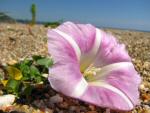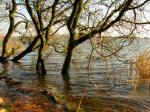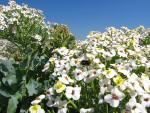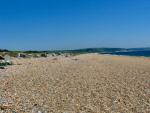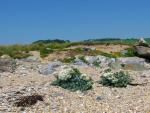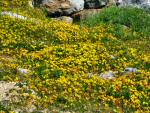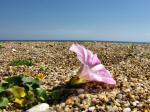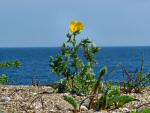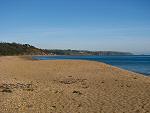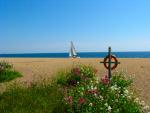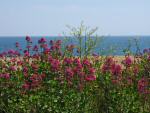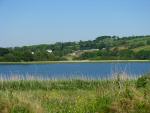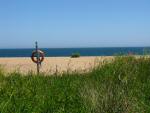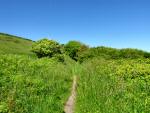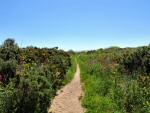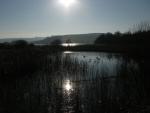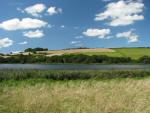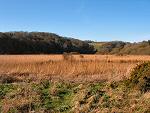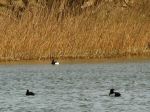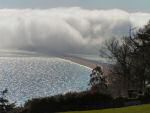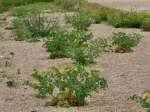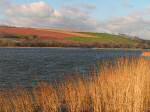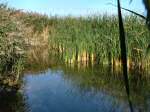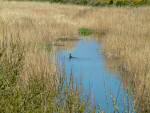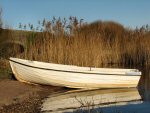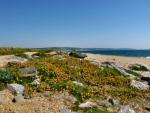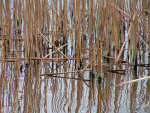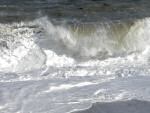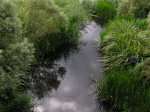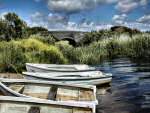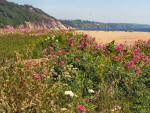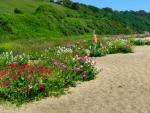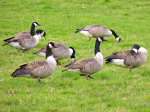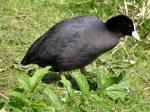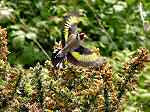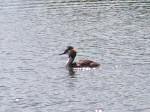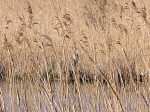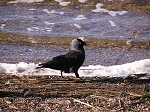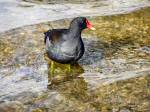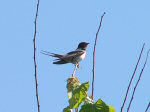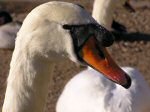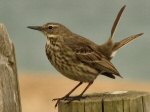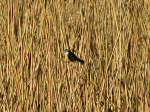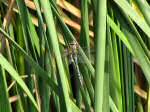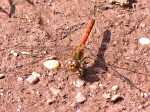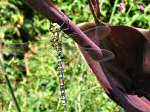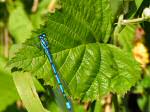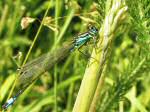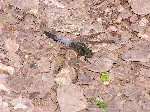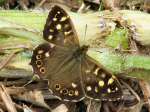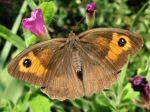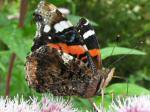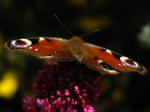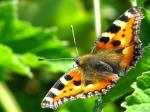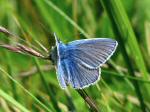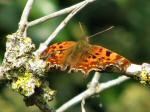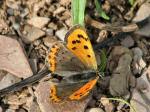Slapton Sands is situated on Start Bay in South Devon.
Sands is a misleading name since it is a three mile long straight shingle
beach streching from one headland at Strete Gate to another by the village
of Torcross. Another anomaly is that the village of Slapton is actually
half a mile inland from Slapton Sands. The village that lies alongside
the beach is Torcross. The area is a National Nature Reserve and a Site
of Special Scientific Interest because of the habitat and the rare species
which thrive in the unique conditions.
It started to be formed over 10,000 years ago at the end of the Ice Age
and its formation led to the creation of Slapton Ley, the largest natural
freshwater lake in the South West of England.
The Ley actually consists of two leys, a Lower Ley and a Higher Ley.
The higher ley to the north consists of rich fen vegetation and wet willow
woodland (called Carr) with the larger open-water lower ley to the south
with its underwater plant life and reed fringes.
The reserve consists of a variety of habitats, including reedbed, fen,
woodland and carr. This has led to the wonderful diversity of plants and
animals seen at Slapton Ley. The Reserve is famous for its diversity of
bird life as well as providing a home for fish, dormice, badgers and otters,
insects and rare flora. Among the rarities found here are the largest
population in England of Cetti's Warbler and Britain's last remaining
example of the vascular plant strapwort.
The shingle bar is a constantly changing environment, which alters throughout
the seasons due to weather and wave conditions. Breaching of this ridge
by the sea can occur in winter storms and a section of the A379 road which
runs between the Ley and the beach was seriously damaged by stormy seas
in January 2001. The A379 had to be closed, until a new section of road
was built some 25 metres further inland. The whole area remains under
threat and the decision whether to protect the coastline or do nothing,
and let nature take its course has yet to be made.
The flora of the shingle bar is also continually changing. Pioneer species
such as yellow-horned poppy and
sea spurge establish themselves on the bare shingle leading the way to
the establishment of plants such as sea campion and sea thrift. These
plants are adapted to the harsh conditions of the shingle beach with its
frequent salt spray and lack of freshwater - an arid climate compared
to the usual mild English climate.
The whole area was evacuated during the second world war and used by
the US Army as a training area during the preparations for the Normandy
landings. In 1944, Exercise Tiger - the rehearsal for the Normandy landings
- took place off Slapton Sands. Hundreds of servicemen were killed when
German E-boats attacked them during the exercise. On the beach at Slapton
sands stands a granite memorial to this wartime role and in the village
of Torcross there is another war memorial - a Sherman Tank raised from
the sea bed in 1984. | 

